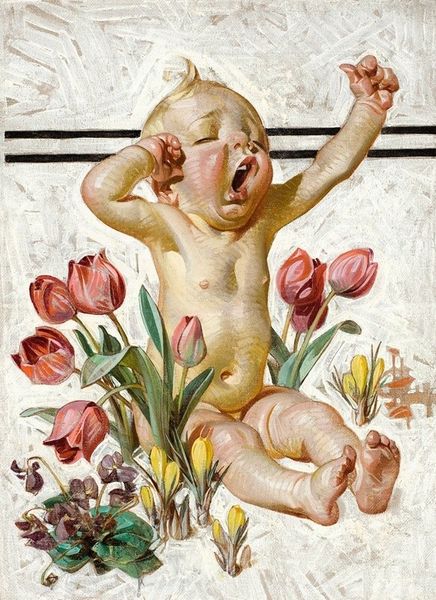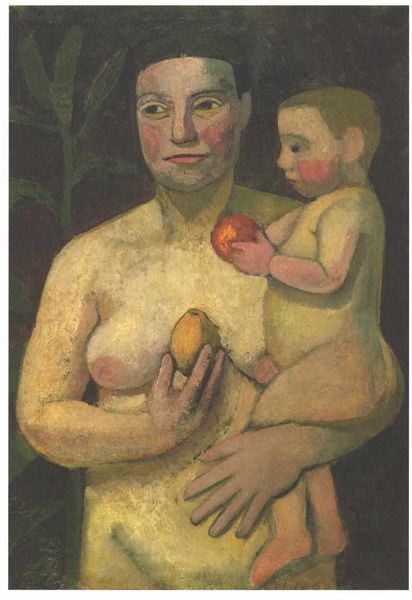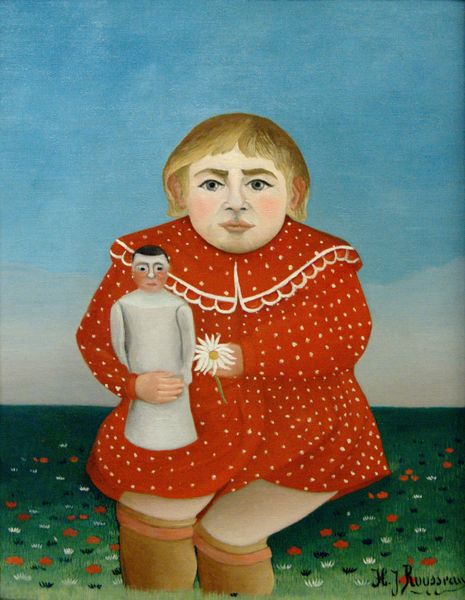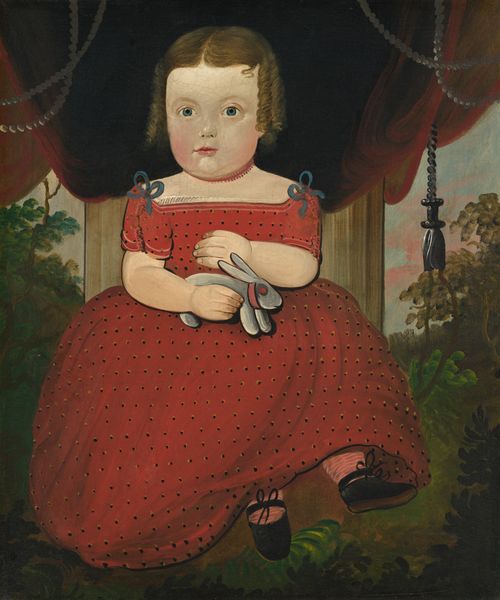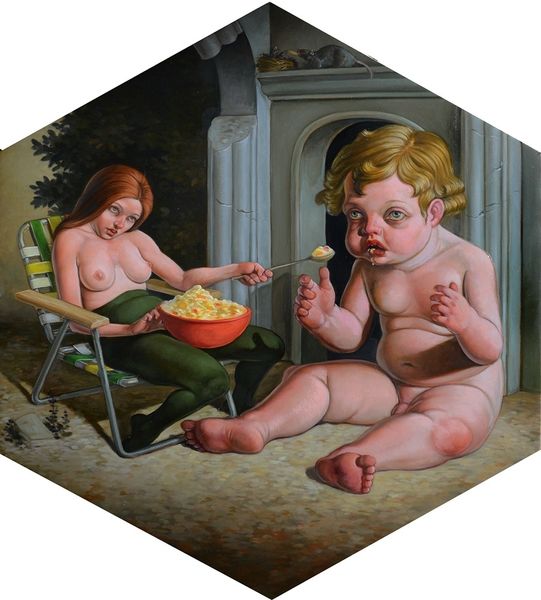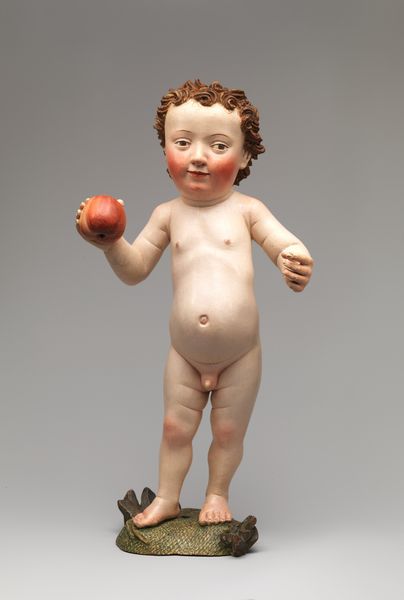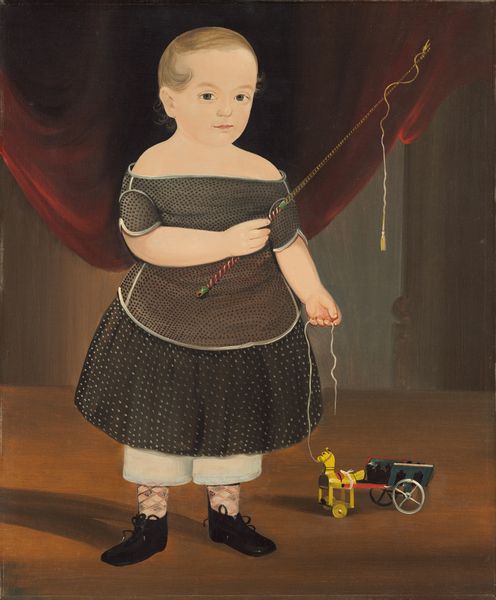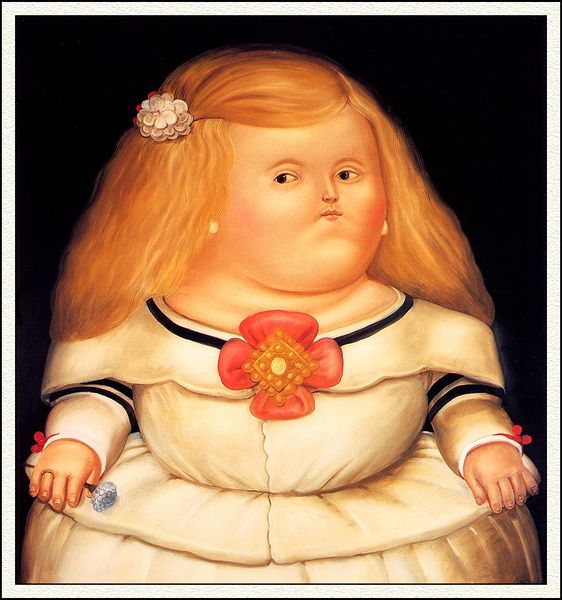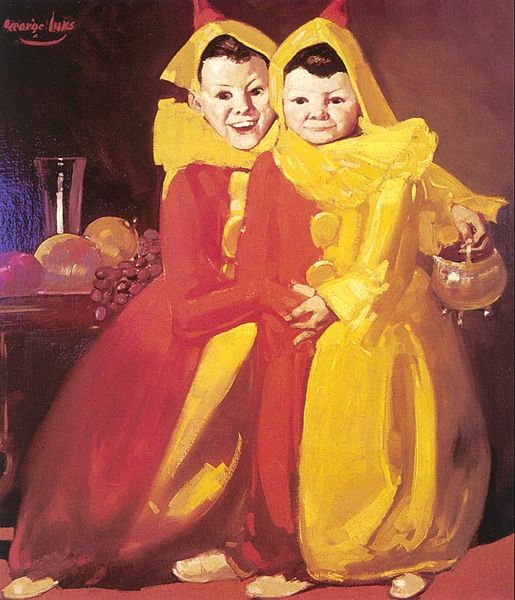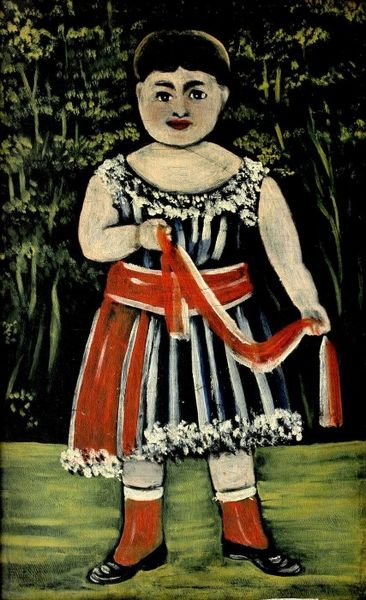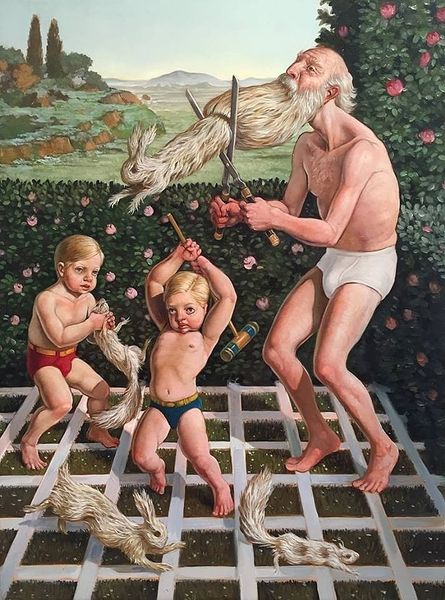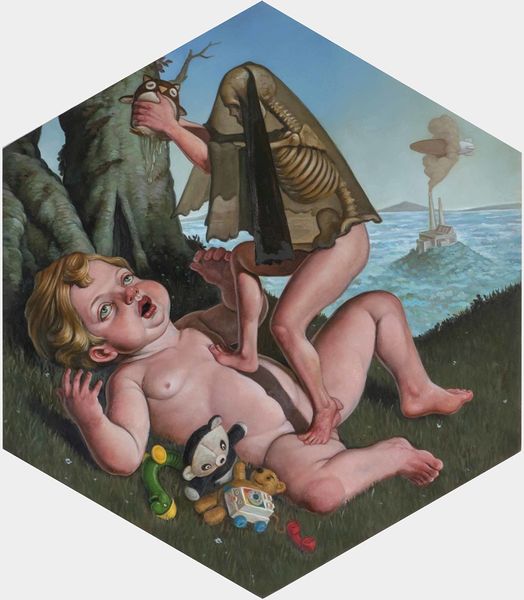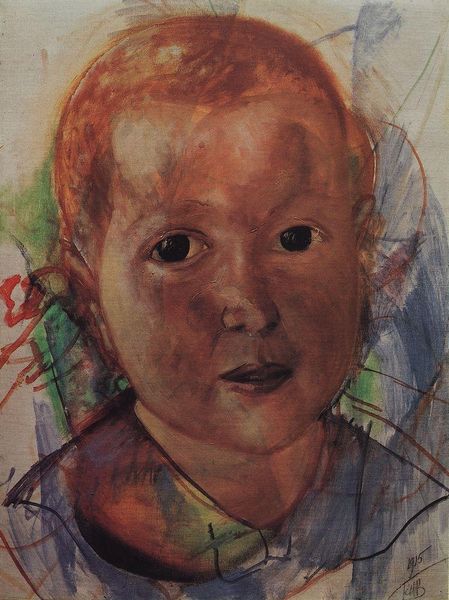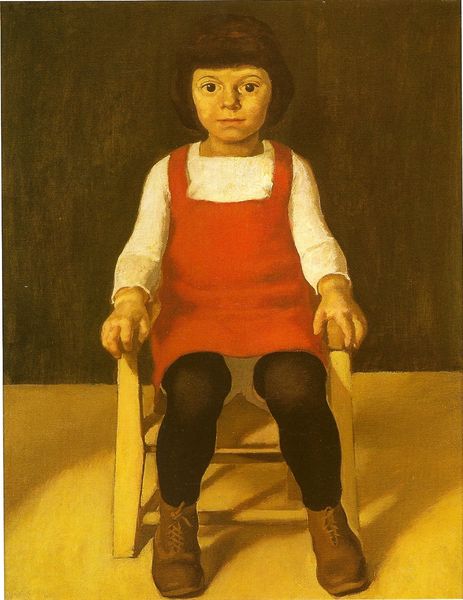
Dimensions: 81 x 100 cm
Copyright: Public domain
Curator: Henri Rousseau’s "Child with a Puppet," painted in 1903, greets us with a fascinating blend of naivety and peculiar composition. Editor: It strikes me as strangely unsettling, almost a proto-surrealist vision, with that puppet dangling so rigidly. The child's gaze is rather piercing too, isn't it? Curator: Absolutely. And to think about its social context—Rousseau, a self-taught artist, was deeply connected to the working classes and the rising petit bourgeoisie. This painting, like much of his work, critiques the traditional expectations of portraiture and the representation of childhood, which was heavily romanticized at the time. Consider also the puppet—an object of entertainment, often controlled, presented alongside a child, equally constrained by societal expectations. Editor: Good point. The puppet is crafted—obviously, with a crude application of paint, yet meticulously patterned and carefully detailed costume. Thinking about Rousseau’s day job—a toll collector, the painstaking rendering seems almost an act of resistance against mass-produced consumerism, placing value in unique handcrafted production. Curator: And even the flowers tucked into the child’s dress. Consider the Victorian language of flowers, where specific blooms conveyed coded messages. Here, they appear almost overflowing, hinting at a certain rebelliousness against the prescribed innocence of childhood. Rousseau challenges notions of purity and decorum that often restricted girls, positioning his subject outside convention. Editor: I am very intrigued with how his materials enhance this "naive" feel. Rousseau uses densely layered oil paint. It builds up this interesting texture – this surface, in fact, almost lends a tactile feel which contributes greatly to my initial assessment. And further enhances how personal the final piece became in light of the historical social dynamic. Curator: It definitely encourages one to delve deeper and see past its initial outward presentation. Rousseau’s seemingly simplistic style contains nuanced layers of meaning. Editor: Indeed, this closer examination helps us recognize the artwork not just for its face value. But the process by which that presentation challenges us.
Comments
No comments
Be the first to comment and join the conversation on the ultimate creative platform.
